Consciousness Club | January 11, 2023
The Ghost in the Shell
Subjectivity
- What are the mechanisms of subjective experience?
Neural Mechanisms
- What are the neural events that generate conscious experience?
Scale
- What is the scale at which conscious experience emerges from biological activity?
Function
- What is the evolutionary function of conscious experience?
Detection
- How can we detect subjective conscious experience outside of the human mind?
5 problems
Mechanisms
Sensory Inputs
Executive Function
Attention
Experimental Dissociation
Sensory Ambiguity
Bistable Perception
Bistable Perception
Bistable Perception
Bistable Perception
Neural Mechanisms
- Constructing unambiguous conscious experiences from ambiguous sensory information
Models of Bistability
Predictive Coding
Predictive Coding
Predictive Coding
Predictive Coding
Predictive Coding
Predictive Coding
Model-based fMRI
- Prediction errors are encoded in IFC and V5/hMT+.
Model-based fMRI
- Prediction errors are encoded in IFC and V5/hMT+.
Model-based fMRI
- Prediction errors are fed forward from V5/hMT+ to IFC.
Model-based fMRI
- Perceptual content can be decoded from V5/hMT+.
Model-based fMRI
- Prediction errors are generated in suppressed V5/hMT+ voxels.
Feedforward Processing
- Suppressed voxels in V5/hMT+ encode perceptual conflict.
- IFC receives feedforward information about perceptual conflict.
Feedback processing
- Is the prefrontal representation of perceptual conflict relevant for conscious experience?
- Causal intervention: theta-burst stimulation in IFC and vertex
TMS
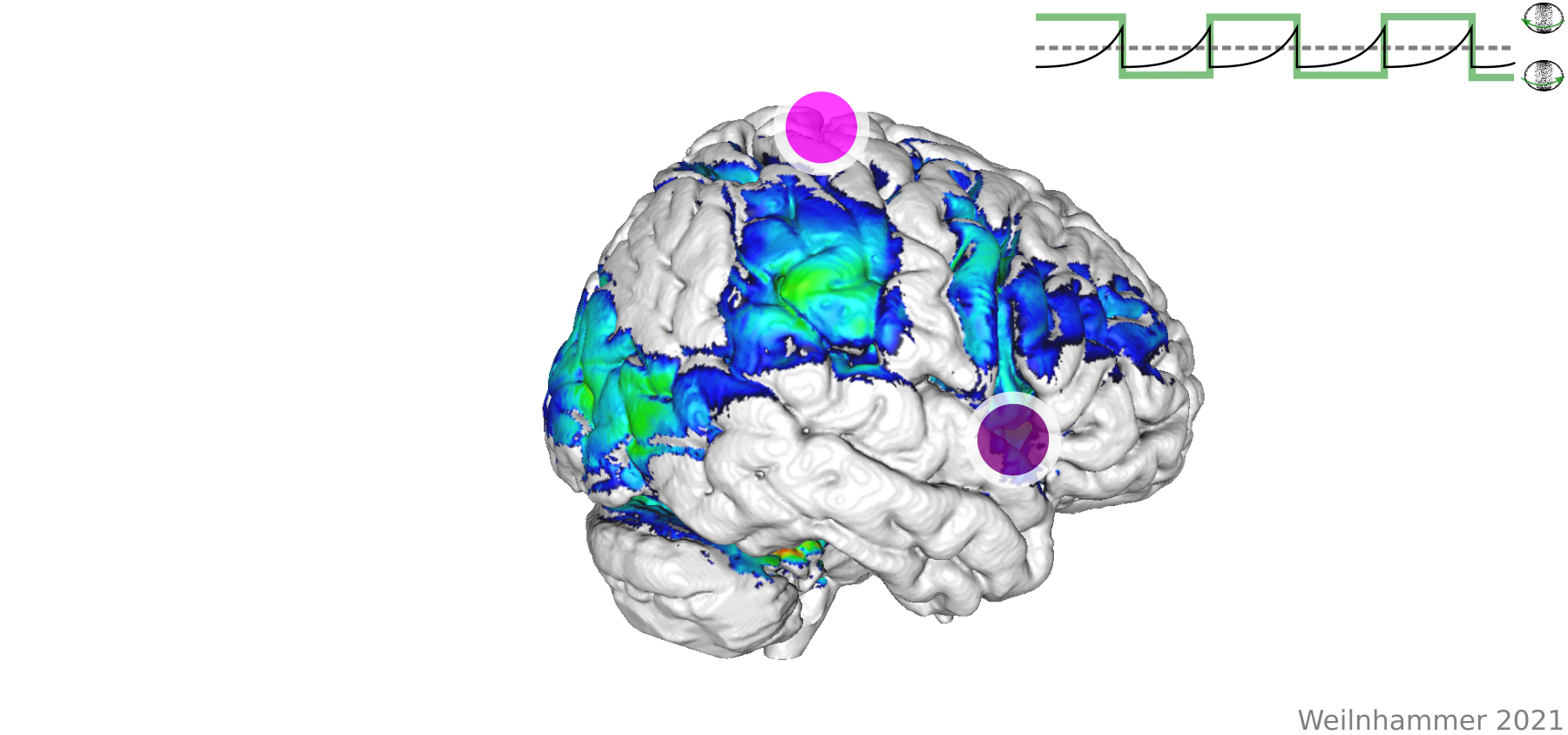
TMS
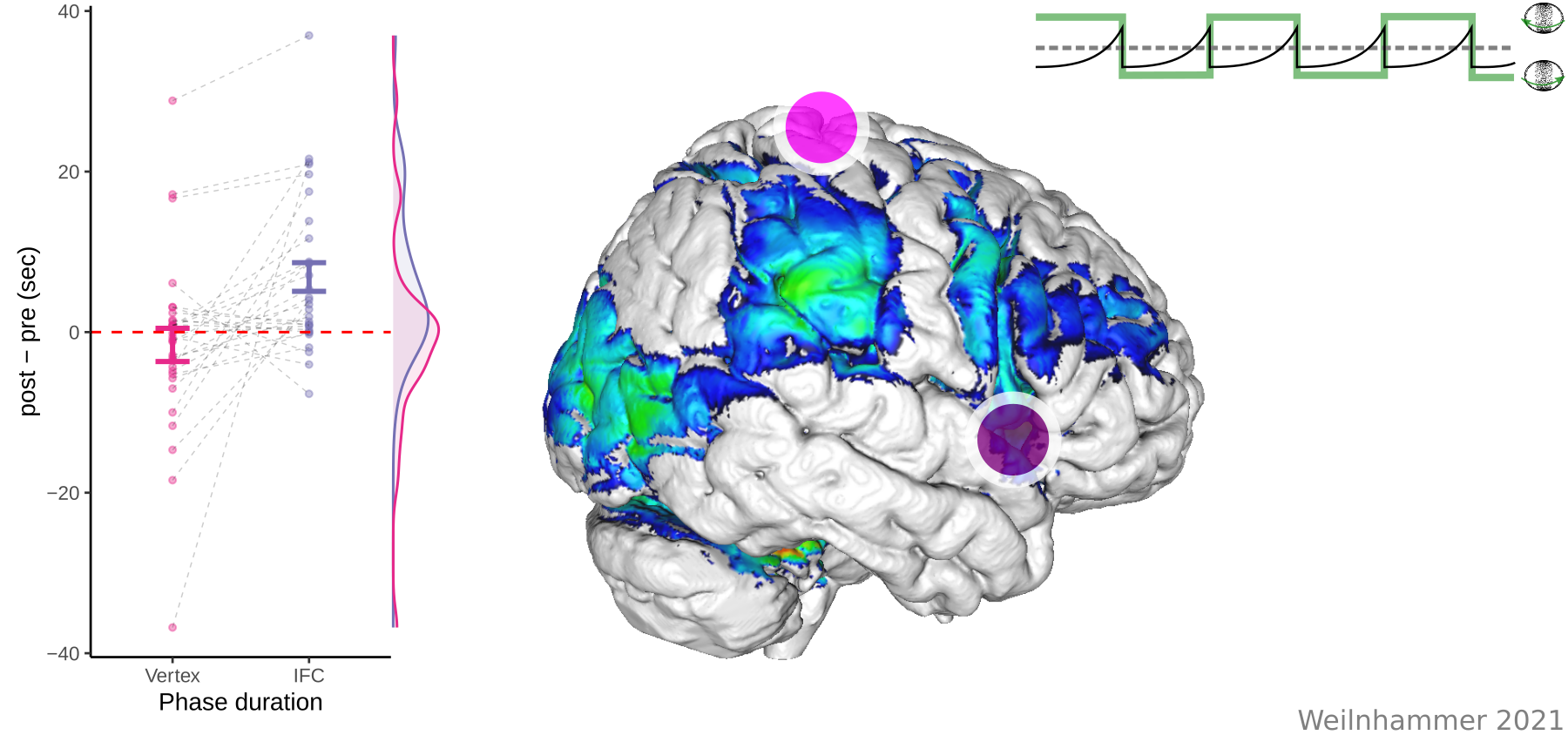
TMS
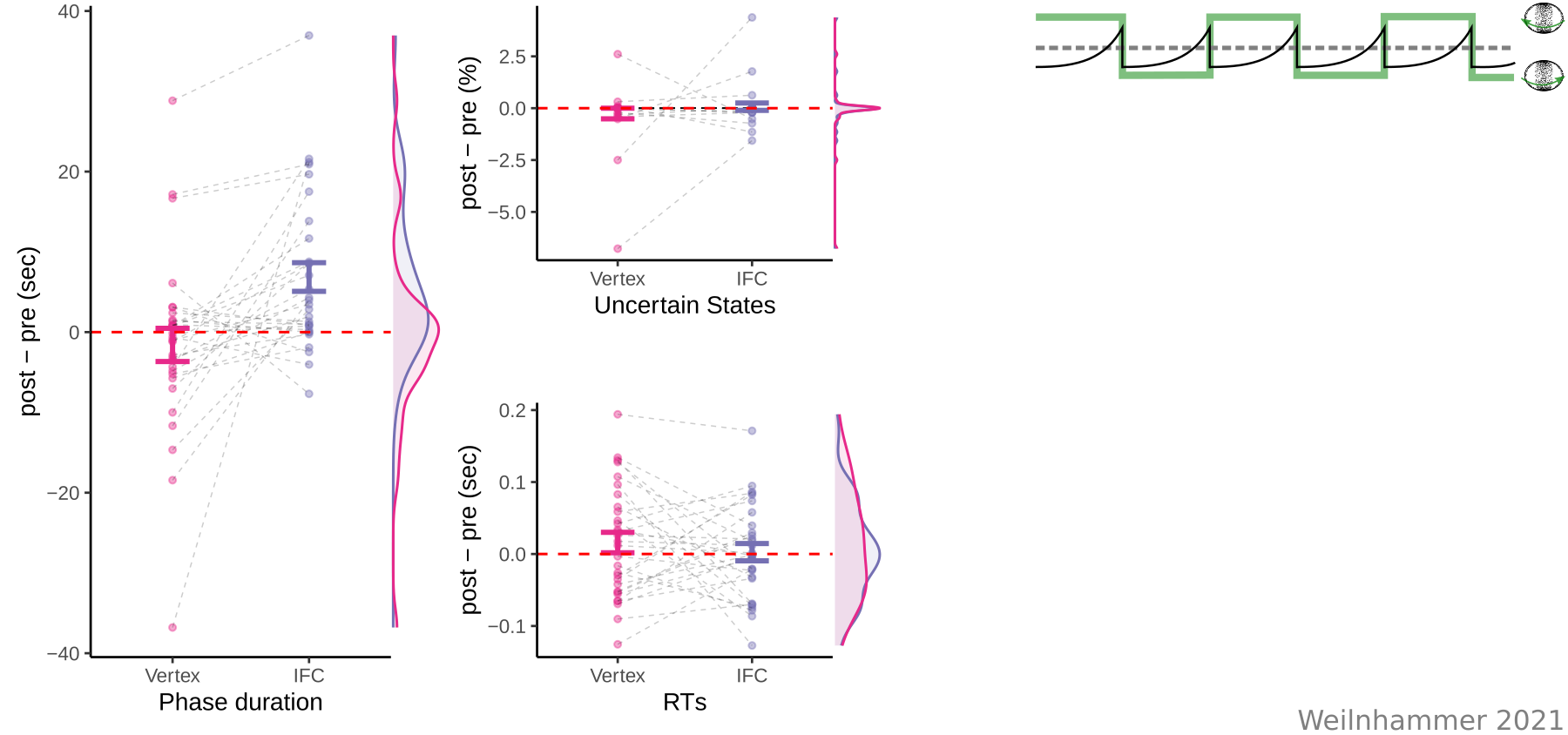
TMS
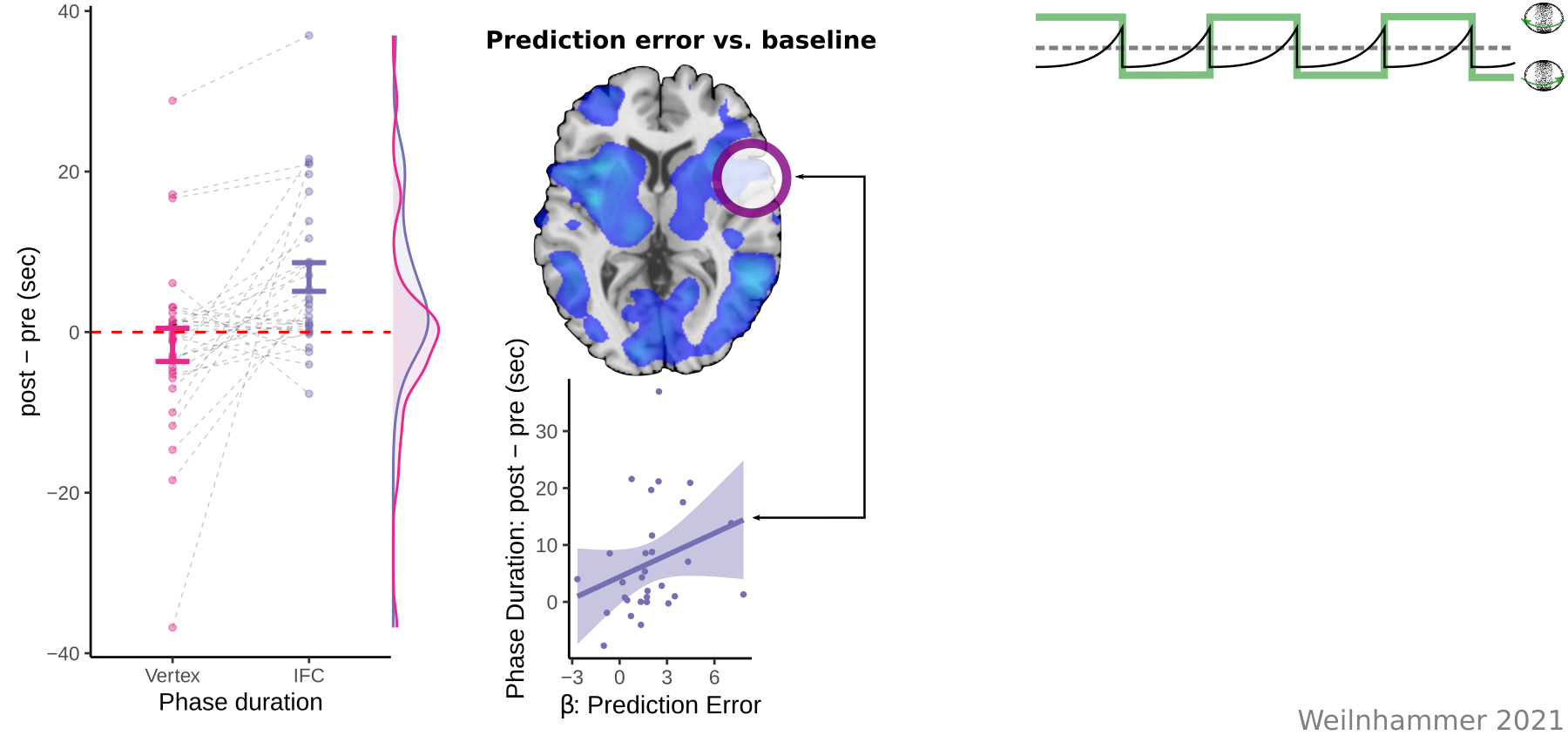
TMS
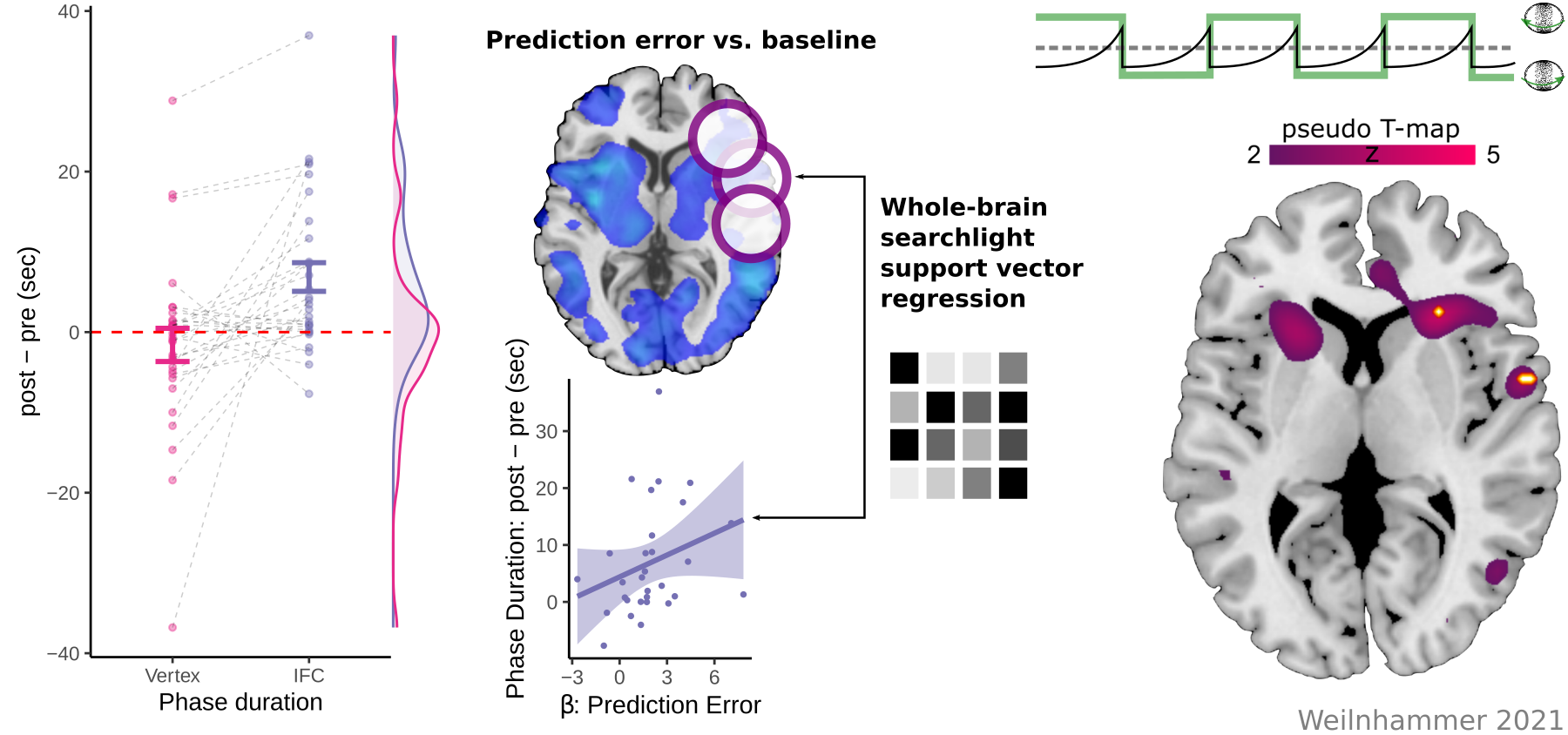
Hybrid model
- IFC detects and resolves perceptual conflict during bistable perception.
Summary
Feedforward processing
- Individual frames are processed independently
Feedforward processing
- Individual frames are processed independently
Natural environments
- Individual frames are strongly autocorrelated
Natural environments
- One frame predicts the next
Feedback
- Predictive coding compresses the input and saves energy
Feedback
- There is extensive feedback connectivity within the brain
Circularity
- The balance between predictions and prediction errors needs to be regulated
Hallucinations
Computational Psychiatry
- Imbalance between in the precision-weighting of prior and likelihood
Computational Psychiatry
- Are hallucinations caused by weak or strong priors?
Bistable Perception
Computational Psychiatry
Outlook
Outlook
Outlook
Outlook
Summary
Adaptive Perception
- How to balance internal predictions with external sensory information?
Graded Ambiguity
Perceptual Modes
- Externally and internally-biased modes of perception
Outlook
- Confidence Database: 4500 humans, 22 million choices
- IBL Database: 165 mice, 1.5 million choices
Summary
Thanks a lot for your attention!
Bibliography
Weilnhammer, Stuke, Hesselmann, Sterzer, Schmack. A Predictive Coding Account of Bistable Perception. PLOS Computational Biology 2017.
Weilnhammer, Lukas, Eckert, Stuke, Heinz, Sterzer. Psychotic Experiences in Schizophrenia and Sensitivity to Sensory Evidence. Schizophrenia Bulletin 2020.
Weilnhammer, Fritsch, Chikermane, Eckert, Kathak, Stuke, Sterzer. An Active Role of Inferior Frontal Cortex in Conscious Experience. Current Biology 2021.
Weilnhammer, Chikermane, Sterzer. Bistable perception alternates between internal and external modes of sensory processing. iScience 2021.
Weilnhammer, Stuke, Standvoß, Sterzer. Humans and mice fluctuate between external and internal modes of sensory processing. BioRxiv 2022.